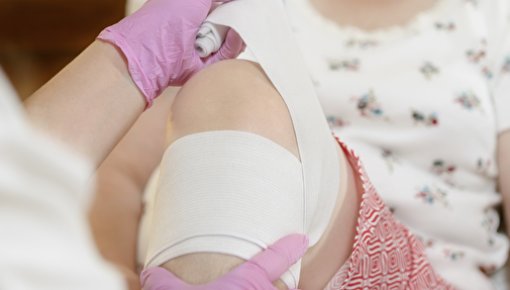Negative pressure wound therapy

Negative pressure wound therapy can be used to help close poorly healing wounds and certain types of surgical wounds. Some studies suggest that this treatment can help wounds heal better.
Wounds are typically cleaned and then closed. A simple plaster is usually enough to cover smaller wounds and let them close on their own. The edges of larger wounds are often joined together again using stitches, staples, adhesive strips or skin glue, and then the wound is covered with a dressing. But sometimes wounds can’t be closed directly, for instance because they are too big or infected. Then they are treated with a wound dressing. Depending on the type of wound, different kinds of dressings made of various materials can be used. The aim is to keep the wound clean, protect it from infection and help it to heal.
Wounds that don’t start to heal after several weeks despite treatment are considered to be chronic. Inflamed or chronic wounds are cleaned regularly by healthcare professionals, who remove dead or infected tissue as well. This treatment is called “ debridement.”
On top of that, a treatment called negative pressure wound therapy (also referred to as vacuum-assisted closure or VAC therapy) is sometimes recommended for certain wounds, too.

